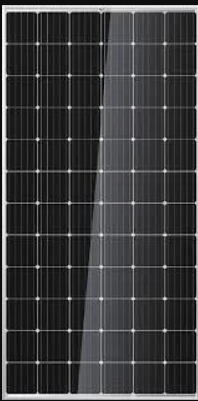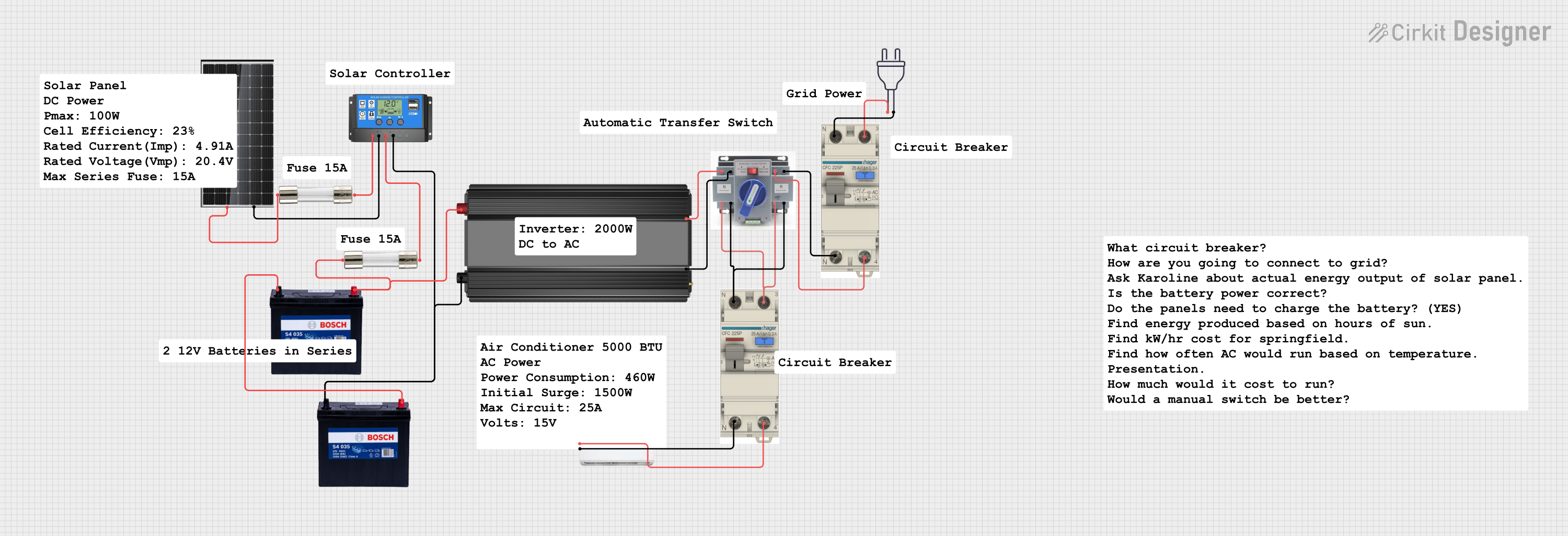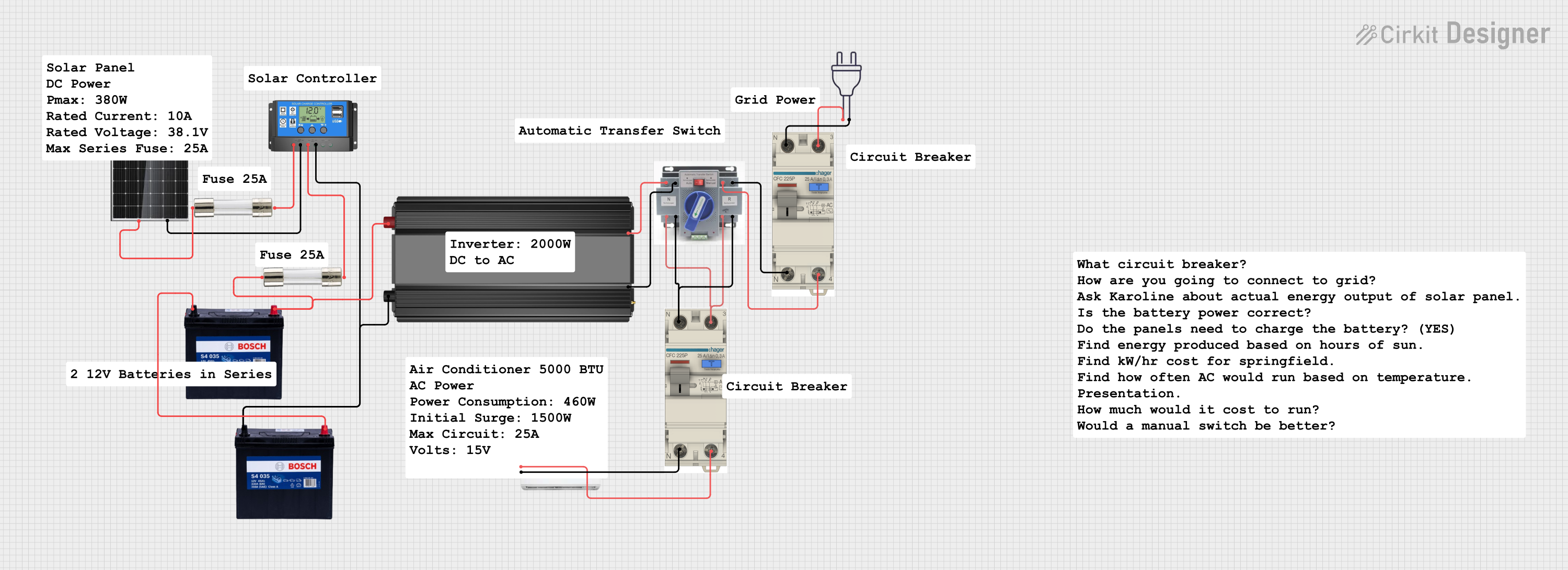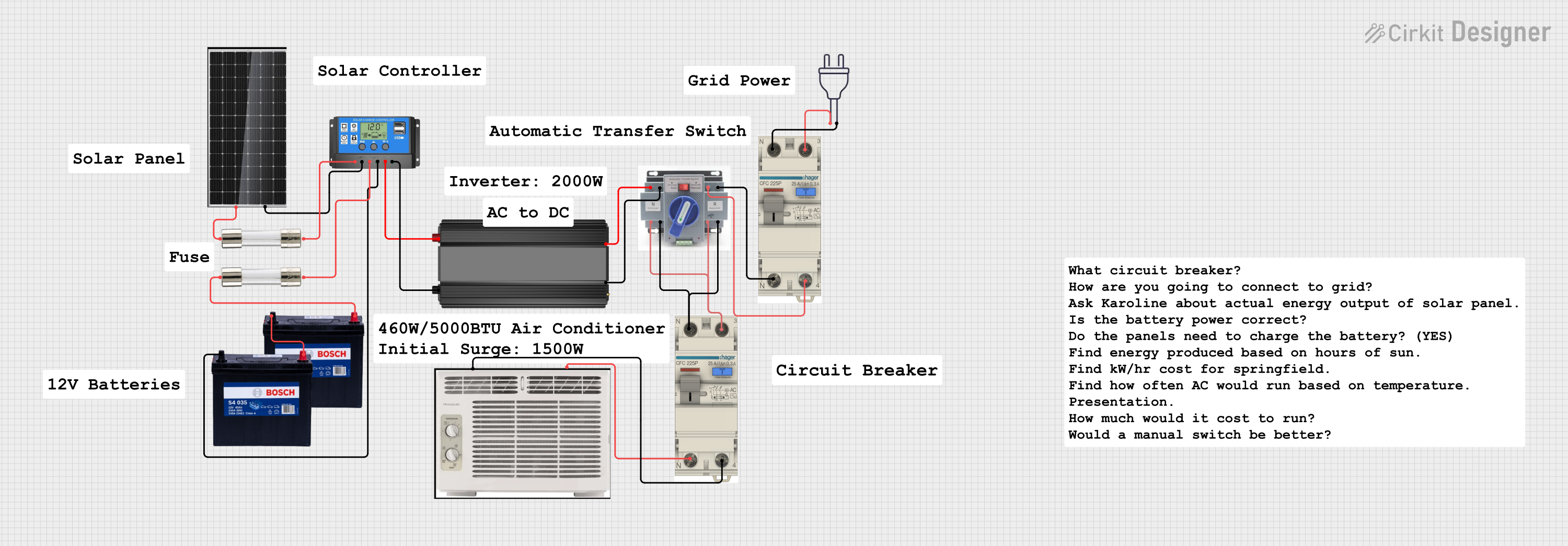
How to Use Solar Panel 380W: Examples, Pinouts, and Specs

 Design with Solar Panel 380W in Cirkit Designer
Design with Solar Panel 380W in Cirkit DesignerIntroduction
The Solar Panel 380W is a high-efficiency photovoltaic module designed to convert sunlight into electricity. With a power output of 380 watts, it is ideal for residential and commercial energy generation systems. This solar panel is built with durable materials to withstand various environmental conditions, ensuring long-term performance and reliability. It is commonly used in rooftop solar installations, off-grid systems, and solar farms.
Explore Projects Built with Solar Panel 380W

 Open Project in Cirkit Designer
Open Project in Cirkit Designer
 Open Project in Cirkit Designer
Open Project in Cirkit Designer
 Open Project in Cirkit Designer
Open Project in Cirkit Designer
 Open Project in Cirkit Designer
Open Project in Cirkit DesignerExplore Projects Built with Solar Panel 380W

 Open Project in Cirkit Designer
Open Project in Cirkit Designer
 Open Project in Cirkit Designer
Open Project in Cirkit Designer
 Open Project in Cirkit Designer
Open Project in Cirkit Designer
 Open Project in Cirkit Designer
Open Project in Cirkit DesignerTechnical Specifications
Below are the key technical details and pin configuration for the Solar Panel 380W:
Key Technical Details
| Parameter | Value |
|---|---|
| Maximum Power (Pmax) | 380 W |
| Voltage at Pmax (Vmp) | 40.5 V |
| Current at Pmax (Imp) | 9.38 A |
| Open Circuit Voltage (Voc) | 48.5 V |
| Short Circuit Current (Isc) | 9.85 A |
| Module Efficiency | ~20% |
| Operating Temperature | -40°C to +85°C |
| Maximum System Voltage | 1000 V DC (IEC) / 1500 V DC |
| Dimensions | 1765 mm x 1048 mm x 35 mm |
| Weight | 20 kg |
| Connector Type | MC4 or compatible |
| Cell Type | Monocrystalline Silicon |
Pin Configuration and Descriptions
The Solar Panel 380W has two output terminals for electrical connections:
| Pin Name | Description |
|---|---|
| Positive (+) | Positive terminal for DC output |
| Negative (-) | Negative terminal for DC output |
Usage Instructions
How to Use the Solar Panel 380W in a Circuit
Positioning the Panel:
- Install the solar panel in a location with maximum sunlight exposure, ideally facing south (in the northern hemisphere) or north (in the southern hemisphere) at an angle equal to the latitude of the location.
- Ensure there are no obstructions like trees or buildings that could cast shadows on the panel.
Electrical Connections:
- Connect the positive terminal of the solar panel to the positive input of a charge controller or inverter.
- Similarly, connect the negative terminal to the negative input of the charge controller or inverter.
- Use MC4 connectors or compatible connectors for secure and reliable connections.
Integration with a Battery System:
- If using a battery, connect the charge controller to the battery to regulate the charging process and prevent overcharging.
- Ensure the charge controller is compatible with the voltage and current ratings of the solar panel.
Connecting to an Inverter:
- For AC power output, connect the charge controller or battery system to an inverter. The inverter will convert the DC power generated by the solar panel into AC power for household or commercial use.
Monitoring and Maintenance:
- Regularly clean the surface of the solar panel to remove dust, dirt, or debris that may reduce efficiency.
- Inspect the electrical connections periodically to ensure they are secure and free from corrosion.
Important Considerations and Best Practices
- Avoid Overloading: Ensure the connected load does not exceed the maximum power output of the solar panel.
- Use a Charge Controller: Always use a charge controller to protect the battery and optimize energy usage.
- Temperature Effects: Be aware that high temperatures can slightly reduce the efficiency of the solar panel.
- Series or Parallel Connections: When connecting multiple panels, ensure the voltage and current ratings of the system are within the limits of the charge controller and inverter.
Example: Connecting to an Arduino UNO
The Solar Panel 380W can be used to power an Arduino UNO indirectly through a voltage regulator or battery system. Below is an example of how to monitor the voltage of the solar panel using an Arduino UNO:
// Example code to monitor solar panel voltage using Arduino UNO
// Ensure the solar panel is connected to a voltage divider circuit
// to step down the voltage to a safe range for the Arduino's analog pin.
const int analogPin = A0; // Analog pin connected to the voltage divider
const float voltageDividerRatio = 11.0; // Ratio for a 10k:1k resistor divider
const float referenceVoltage = 5.0; // Arduino's reference voltage (5V)
void setup() {
Serial.begin(9600); // Initialize serial communication
}
void loop() {
int analogValue = analogRead(analogPin); // Read the analog pin value
float panelVoltage = (analogValue * referenceVoltage / 1023.0) * voltageDividerRatio;
// Print the measured voltage to the Serial Monitor
Serial.print("Solar Panel Voltage: ");
Serial.print(panelVoltage);
Serial.println(" V");
delay(1000); // Wait for 1 second before the next reading
}
Troubleshooting and FAQs
Common Issues and Solutions
Low Power Output:
- Cause: Insufficient sunlight or shading on the panel.
- Solution: Ensure the panel is installed in a location with maximum sunlight exposure and no obstructions.
No Power Output:
- Cause: Loose or disconnected cables.
- Solution: Check all electrical connections and ensure they are secure.
Overheating:
- Cause: Poor ventilation or high ambient temperature.
- Solution: Install the panel in a well-ventilated area and avoid placing it directly on heat-absorbing surfaces.
Corrosion on Connectors:
- Cause: Exposure to moisture or humidity.
- Solution: Use weatherproof connectors and inspect them regularly for signs of corrosion.
FAQs
Q: Can the Solar Panel 380W be used in an off-grid system?
- A: Yes, it is suitable for off-grid systems when paired with a charge controller and battery.
Q: What type of inverter should I use with this panel?
- A: Use an inverter compatible with the panel's voltage and power output, such as a 48V DC to AC inverter.
Q: How do I clean the solar panel?
- A: Use a soft cloth or sponge with water and mild soap. Avoid abrasive materials that could scratch the surface.
Q: Can I connect multiple Solar Panel 380W units together?
- A: Yes, you can connect them in series or parallel, depending on the desired voltage and current output. Ensure the system components (e.g., charge controller, inverter) can handle the combined ratings.
This concludes the documentation for the Solar Panel 380W.